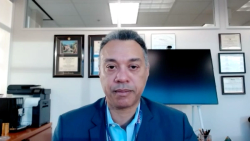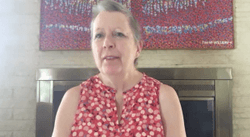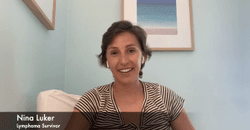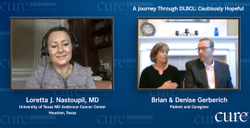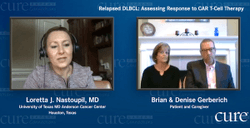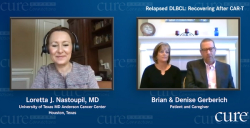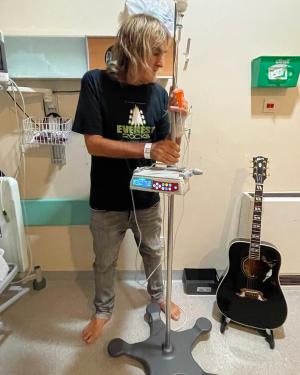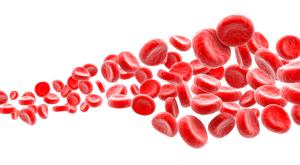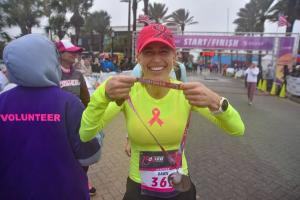Targeted Therapies Shake up the DLBCL Treatment Paradigm, Expert Says
An expert gives an overview of current standard of care and what’s coming down the pipeline in terms of treatment options for diffuse large B-cell lymphoma.
The development of new treatment options for diffuse large B-cell lymphoma (DLBCL) traditionally has lagged behind other types of blood cancer, but the implementation of targeted therapies and other new clinical trials are starting to move the needle forward for the disease, which is the most common type of non-Hodgkin lymphoma.
Dr. Brian T. Hill, director of the Lymphoid Malignancies Program, recently discussed these exciting updates at the 2022 International Congress on Hematologic Malignancies: Focus on Leukemias, Lymphomas, and Myeloma.
R-CHOP as Standard of Care
One of the main struggles in treating DLBCL is how similar treatment outcomes are for patients receiving the same standard-of-care therapies, Hill said.
Various factors can indicate the level of risk for patients. International Prognostic Index (IPI) status considers risk based on age greater than 60, poor performance status, advanced stage, serum lactate dehydrogenase above normal limits (which could indicate tissue or organ damage), and at least one extranodal (beyond the lymph nodes) site. Higher IPI is predictive of worse overall survival (OS).
The standard of care for frontline therapy is R-CHOP, a drug combination of Rituxan (rituximab), cyclophosphamide, doxorubicin, vincristine and prednisone), which is typically given once a day every three weeks for six cycles. A viable alternative is dose-adjusted R-EPOCH (Rituxan, etoposide, prednisone, vincristine, cyclophosphamide, and doxorubicin) regimen given as continuous infusions over four to five days every three weeks for six cycles, with dose escalation every cycle.
For double-hit lymphoma (where there are rearrangements in two genes), which is especially high-risk, data suggest that intensive induction regimens such as R-EPOCH are more effective than R-CHOP. Only 10% of patients who have double-hit lymphoma will receive R-EPOCH as opposed to R-CHOP in most cancer centers.
R-CHOP and R-EPOCH were directly compared in the A50303 trial, but the results were negative.No statistically significant difference was found in terms of OS, with a two-year OS rate of 86.5% for R-EPOCH and 85.7% for R-CHOP. Hill noted that this trial may have been influenced by factors such as having a longer period of time before patients started receiving treatment, which may have led to enrolling patients with more favorable risk.
Polivy PFS Improvement Challenges Standard of Care
One of the most important changes to standard of care in upfront therapy has been the introduction of Polivy (polatuzumab vedotin), an antibody-drug conjugate that targets CD79B, a component of the B-cell receptor signaling apparatus.
In the relapsed/refractory setting, a phase 2 trial compared Polivy with bendamustine and Rituxan versus bendamustine and Rituxan alone. Though it was a small study, Hill points out a higher number of complete responses (CR) with Polivy /bendamustine/Rituxan in the patients with ABC versus GC DLBCL. There were no differences in subgroups in the Polivy group.
Based on the positive outcomes with Polivy in the relapsed setting, vincristine was substituted from the R-CHOP regimen to create the Polivy -R-CHP regimen, and the two regimens were compared directly in previously-untreated patients in the phase 3 POLARIX trial. The two-year progression-free survival (PFS) rate, defined as the average time from treatment until patients’ disease gets worse, was 76.7% with Polivy-R-CHP versus 70.2% with R-CHOP, favoring Polivy.
Subgroup analysis showed that patients with high IPI score had better outcomes with Polivy-R-CHP, and those in the ABC group fared better with Polivy despite their expected higher risk. However, there was no OS advantage in this trial.
Based on the subsequent treatments received by the patients in each arm of POLARIX, Hill suggested that in approximate terms, several times as much money was spent to prevent relapse in those who received R-CHOP versus those receiving Polivy-R-CHP, which could warrant more investigation of costs and benefits of treatment.
Going Forward Using Targeted Therapies
In his presentation, Hill proposed the development of five new comparison trials for patients with each of 5 molecular subtypes that would compare Polivy-R-CHP plus a targeted inhibitor versus Polivy-R-CHP alone. If these trials show differences in outcomes due to the targeted therapy, patients could be treated more effectively upfront based on the results of genetic testing.
“DLBCL is not a single entity but largely approached this way clinically in 2022. While in general GC-derived tumors have better outcomes than those derived from ABCs, there is a heterogeneity which can be explained in the subgroup analysis,” Hill concluded. “Future clinical trials should be based on integration of multiomic biomarkers to test precision medicine with specific pathway inhibitors for individual subtypes of DLBCL.”
For more news on cancer updates, research and education, don’t forget to subscribe to CURE®’s newsletters here.
Related Content
 Randy Moss Shares Cancer Update, “Squid Game” Star Dies and More
Randy Moss Shares Cancer Update, “Squid Game” Star Dies and MoreFebruary 7th 2025
 Coming to Terms With Hair Loss After Chemotherapy
Coming to Terms With Hair Loss After ChemotherapyJanuary 7th 2025
View additional resources on CureToday.com


